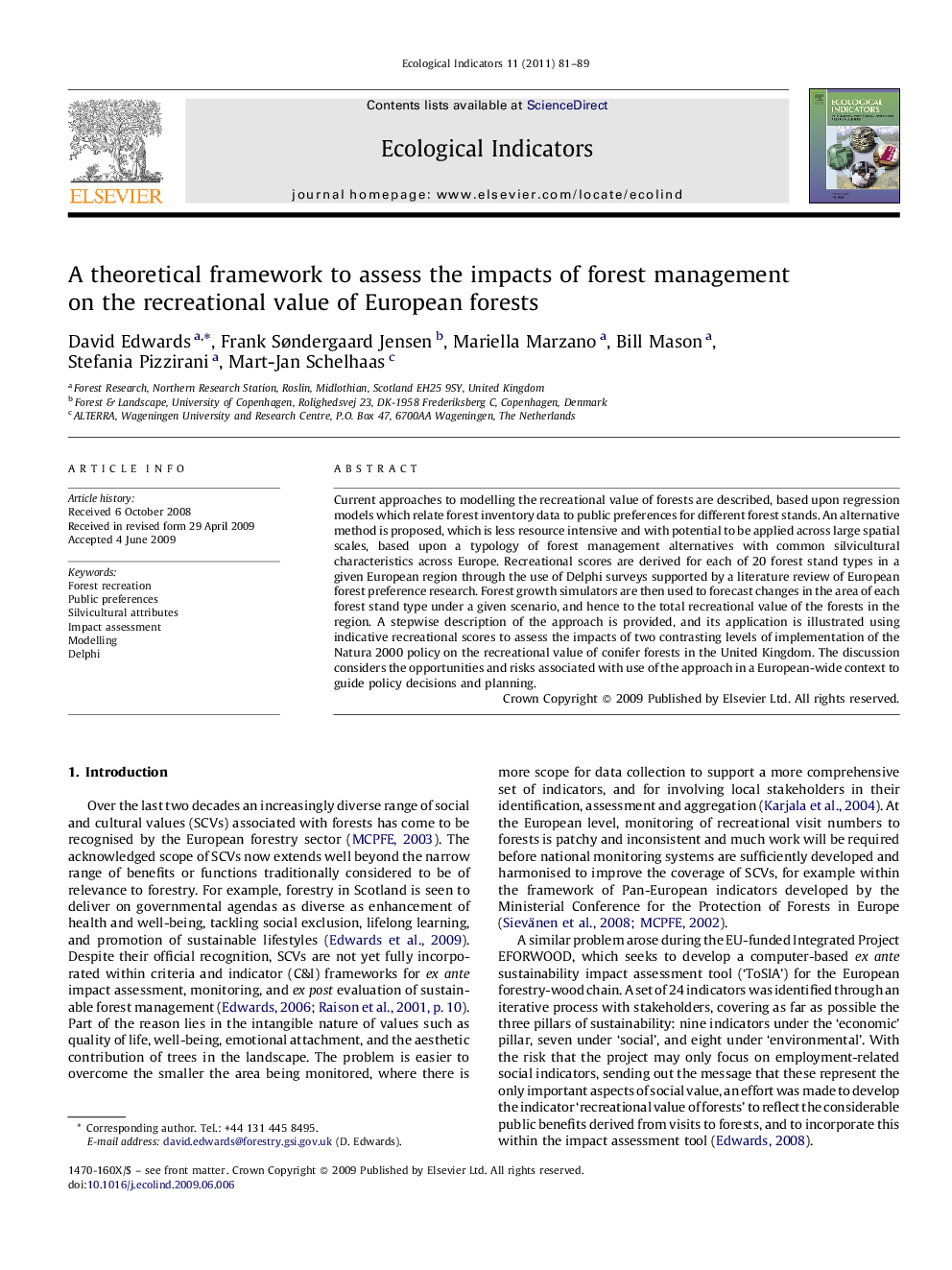| Article ID | Journal | Published Year | Pages | File Type |
|---|---|---|---|---|
| 4374180 | Ecological Indicators | 2011 | 9 Pages |
Current approaches to modelling the recreational value of forests are described, based upon regression models which relate forest inventory data to public preferences for different forest stands. An alternative method is proposed, which is less resource intensive and with potential to be applied across large spatial scales, based upon a typology of forest management alternatives with common silvicultural characteristics across Europe. Recreational scores are derived for each of 20 forest stand types in a given European region through the use of Delphi surveys supported by a literature review of European forest preference research. Forest growth simulators are then used to forecast changes in the area of each forest stand type under a given scenario, and hence to the total recreational value of the forests in the region. A stepwise description of the approach is provided, and its application is illustrated using indicative recreational scores to assess the impacts of two contrasting levels of implementation of the Natura 2000 policy on the recreational value of conifer forests in the United Kingdom. The discussion considers the opportunities and risks associated with use of the approach in a European-wide context to guide policy decisions and planning.
